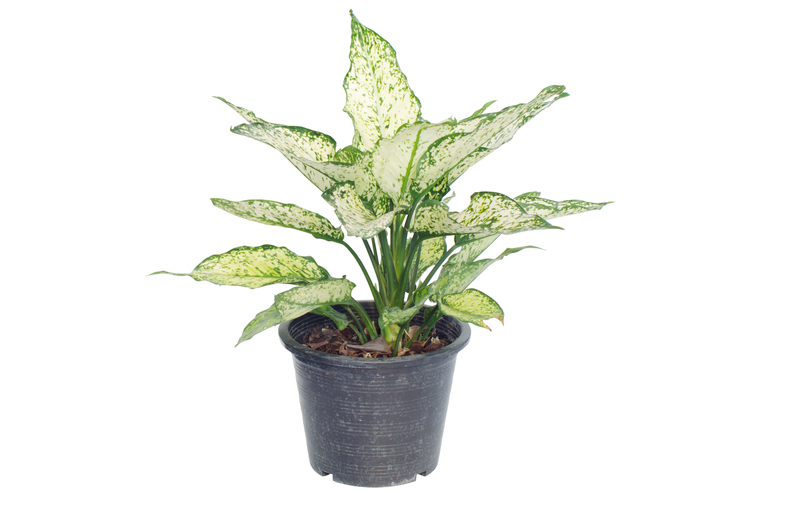Chemical vs Mechanical Methods for Clearing Tree Stumps
Tree stumps can be unsightly, dangerous, and a haven for insects or fungi if left unattended. Whether you're managing your backyard, a commercial landscape, or a woodland area, clearing tree stumps is a necessary part of land maintenance. Today, chemical methods for tree stump removal and mechanical stump clearance techniques are the two primary options homeowners and professionals choose from. In this comprehensive guide, we'll explore the differences, pros, cons, procedures, and best-use scenarios for both chemical and mechanical ways to remove tree stumps.

Why Is Removing Tree Stumps Important?
Leaving an old tree stump in the ground can create multiple issues, including:
- Pest Infestations: Decaying stumps can harbor insects such as termites, beetles, and ants.
- Fungal Growth: Rotting wood supports wood-eating fungus, putting nearby plants at risk.
- Trip Hazards: Stumps create physical obstacles in lawns and gardens, posing a safety risk.
- Regrowth: Many species resprout from the stump, leading to unwanted growth.
- Curb Appeal Loss: Old stumps detract from your property's appearance and value.
For these reasons, effective tree stump removal is crucial. Let's dive into the two main strategies: mechanical and chemical stump clearing methods.
What Are Mechanical Methods for Clearing Tree Stumps?
Mechanical stump removal refers to any physical action or machine-powered technique to eliminate or grind away stumps. These methods are preferred for their speed and completeness. Below, we outline the most common mechanical approaches:
Stump Grinding
Stump grinding uses a high-powered, rotating cutting wheel to chip away the stump below ground level. This is the most popular mechanical stump removal method in both residential and commercial applications.
- Pros: Fast, efficient, and leaves mulch that can be used for landscaping.
- Cons: May leave some roots behind, requires specialized equipment, and can be noisy.
Stump Pulling (Uprooting)
This technique involves digging around the stump to expose the roots, then using a winch, excavator, or heavy vehicle to pull it out of the ground.
- Pros: Removes the entire stump and roots; no chemical residue; immediate result.
- Cons: Labor-intensive, disruptive to soil and surrounding areas, may require large equipment.
Manual Removal
This old-school method uses hand tools such as shovels, axes, and mattocks. Suitable for small stumps or where machinery access is limited.
- Pros: No need for chemicals or heavy machines; cost-effective for small jobs.
- Cons: Physically demanding; slow for large or deeply-rooted stumps.
Chemical Methods for Tree Stump Removal
Chemical stump removal techniques involve applying substances that accelerate wood decay, ultimately making the stump soft enough to break apart or rot into the soil. Here's how chemical methods for clearing tree stumps work:
Potassium Nitrate and Commercial Stump Removers
Potassium nitrate (KNO3) is the most common chemical used. It is applied into drilled holes in the stump. Over several weeks, it speeds up the decomposition process, often followed by burning or manual removal.
- Pros: Low-impact; no need for heavy machinery; good for hard-to-access locations.
- Cons: Time-consuming (weeks or months); chemicals may affect nearby soil; not always suitable for immediate use areas.
Alternative Chemicals
Some use other chemicals, such as Epsom salt or rock salt, to dehydrate and kill stumps. While eco-friendlier, these methods are sometimes less effective than nitrate-based stump removers.
- Pros: Inexpensive; reduced risk of chemical pollution.
- Cons: Slow results; inconsistent effectiveness on large or hardwood stumps.
Burning the Stump After Chemical Treatment
After chemicals have softened the wood, some opt to burn the stump as the final step. Caution is advised due to local fire regulations and safety concerns.
- Pros: Completes removal process; minimal physical effort.
- Cons: Requires supervision; not permitted in some regions; environmental/safety risks.
Head-to-Head Comparison: Chemical vs Mechanical Stump Clearing Methods
Now that we've detailed both approaches, let's compare mechanical and chemical tree stump removal methods directly across several key factors:
1. Speed and Efficiency
- Mechanical: Immediate or same-day results, especially with stump grinding or excavation.
- Chemical: Works over weeks or months. Best for non-urgent projects.
2. Environmental Impact
- Mechanical: Leaves no chemical residue, but mechanical removal can disrupt soil and root networks.
- Chemical: Potential for soil contamination with harsh chemicals, but overall disturbance is minimal.
3. Cost
- Mechanical: Rental or service costs for grinders, excavators, or manual labor add up, especially for large stumps.
- Chemical: Low upfront costs for chemicals; but may require several treatments or additional tools over time.
4. Labor and Physical Effort
- Mechanical: May require heavy lifting and machine operation; professionals often recommended for large stumps.
- Chemical: Lower physical effort, just drilling holes and applying products; ideal for DIYers.
5. Suitability for Different Locations
- Mechanical: Limited by access--tight spaces, near structures, or uneven terrain make machinery difficult or impossible to use.
- Chemical: Great for remote areas or locations where machines can't reach; requires patience.
6. Completeness of Removal
- Mechanical: Stump and visible root system can be almost entirely eliminated, prepping ground for replanting or building.
- Chemical: Often leaves some root fragments; may need to follow up with physical removal.
Detailed Procedures: How to Remove Stumps Using Each Method
Mechanical Stump Removal: Step-by-Step Overview
- Clear the Area: Remove rocks, debris, and obstructions around the stump.
- Choose Your Mechanical Method: Select between stump grinding, pulling, or hand tools.
- Grind or Pull the Stump: Operate equipment as per manufacturer instructions or hire a professional service.
- Backfill the Hole: After removal, fill the cavity with soil, mulch, or lawn seed as needed.
- Dispose of Debris: Compost, mulch, or haul away wood chips and roots.
Chemical Tree Stump Clearing: Step-by-Step Guide
- Prepare the Stump: Cut the tree stump as close to ground level as possible.
- Drill Holes: Using a large drill bit, bore holes 8 to 12 inches deep and 1 inch apart into the top and sides of the stump.
- Apply Chemical: Fill each hole with commercial stump remover (typically potassium nitrate) or Epsom/rock salt.
- Add Water: Pour water into the holes to aid absorption and start the chemical reaction.
- Wait: Allow 4-8 weeks for the stump to become spongy and decayed.
- Manual Removal or Burning (Optional): Once softened, remove the remains with an axe or consider burning if permitted.
- Restore the Area: Backfill with soil and landscape as desired.
Safety Considerations for Stump Removal
Mechanical Methods
- Wear protective gear: Always use goggles, gloves, and sturdy footwear.
- Follow equipment guidelines: Incorrect use can cause serious injury.
- Check for utilities: Contact local utilities before digging or grinding near power or water lines.
Chemical Methods
- Read labels: Use chemicals strictly as directed by manufacturers.
- Keep away from children and pets: Many stump removers are toxic if ingested or touched.
- Wear gloves and eyewear: Protect your skin and eyes from chemical splashes.
Best Uses: When to Choose Chemical vs Mechanical Tree Stump Removal
Not sure which method is best for your situation? Here's a quick guide:
- Large, tough, or many stumps: Mechanical grinding or pulling is faster and more reliable.
- Remote, tight, or sensitive locations: Chemical stump clearing avoids damage to the surrounding area.
- Limited budget or physical ability: Chemicals are less expensive and require less manual effort.
- Environmental sensitivity: Avoid chemicals if concerned about soil or water pollution.
- Immediate lawn use: Mechanical removal readies soil quickly for sodding or planting.
Environmental Impact: A Closer Look
Both stump clearing methods (chemical and mechanical) have environmental implications. Mechanical stump removal creates noise, machine emissions, and may disturb soil ecology. Chemical stump removal, especially with potassium nitrate, introduces non-native substances that might affect soil bacteria and leach into groundwater.
For eco-friendly stump removal:
- Use manual removal where feasible.
- Consider organic alternatives like high-nitrogen fertilizers or eco-certified products instead of synthetic chemicals.
- Compost wood chips and debris rather than sending to landfill.
Professional vs DIY: Which Is Better for Stump Clearance?
While DIY stump removal is possible with either method, professionals bring experience, efficiency, and safety protocols--especially for larger or hazardous jobs. For chemical methods, DIY is common, but always abide by local regulations for chemical usage and burning.

Frequently Asked Questions
How long does chemical stump removal take?
On average, chemical methods for clearing tree stumps take between 4-12 weeks to fully decompose the wood, depending on weather, stump size, and wood hardness.
Is mechanical stump grinding safe for my lawn?
When done professionally, stump grinding is safe for most lawns. You may need a minor soil refill and reseeding after grinding.
Can I burn a stump after using chemicals?
Yes, if local laws permit, but ensure all safety precautions are followed--never burn where fire risk is high.
Will chemical stump remover harm nearby plants?
Chemicals can leach into nearby soil, especially in clay-heavy or poorly-drained areas, so avoid overuse and protect desired vegetation.
Conclusion: Making the Right Choice for Your Needs
Choosing between chemical and mechanical methods for clearing tree stumps depends on your priorities: speed, cost, labor, and environmental considerations. For large or urgent projects, mechanical stump removal is your best bet; for small, budget-sensitive, or hard-to-access stumps, chemical clearing methods are practical, providing you don't require instant results.
Consider your unique situation, local laws, and the environmental impact before deciding. With the right information and technique, you'll restore your landscape's beauty and safety, ensuring a stump-free future.
Ready to clear your tree stumps? Research local service providers for mechanical removal or find the best-rated chemical products at your local garden center!